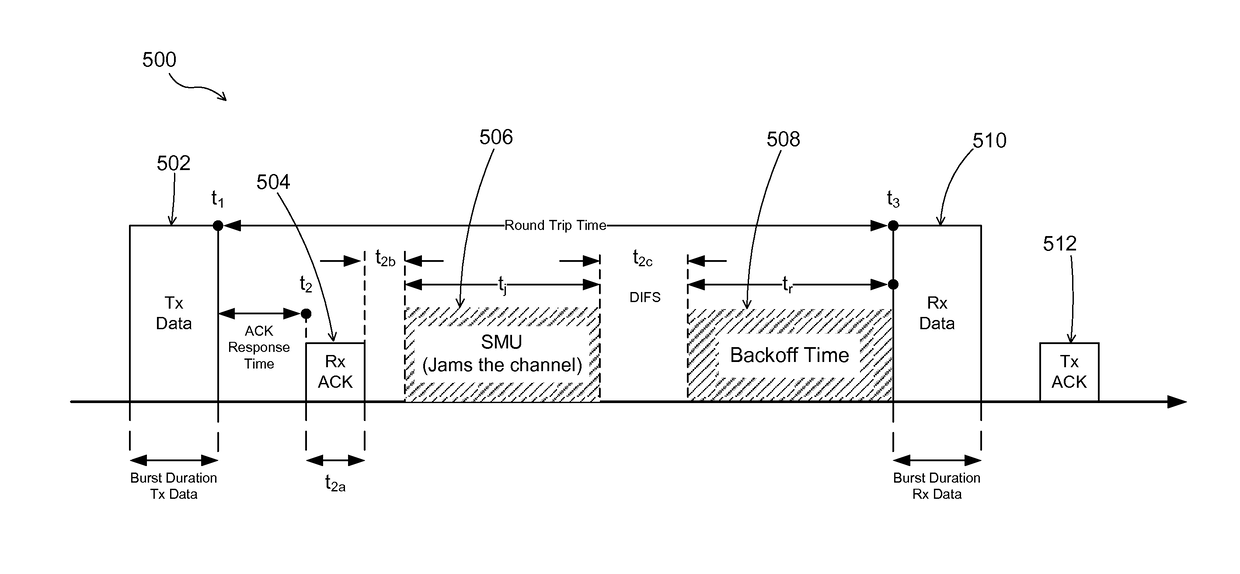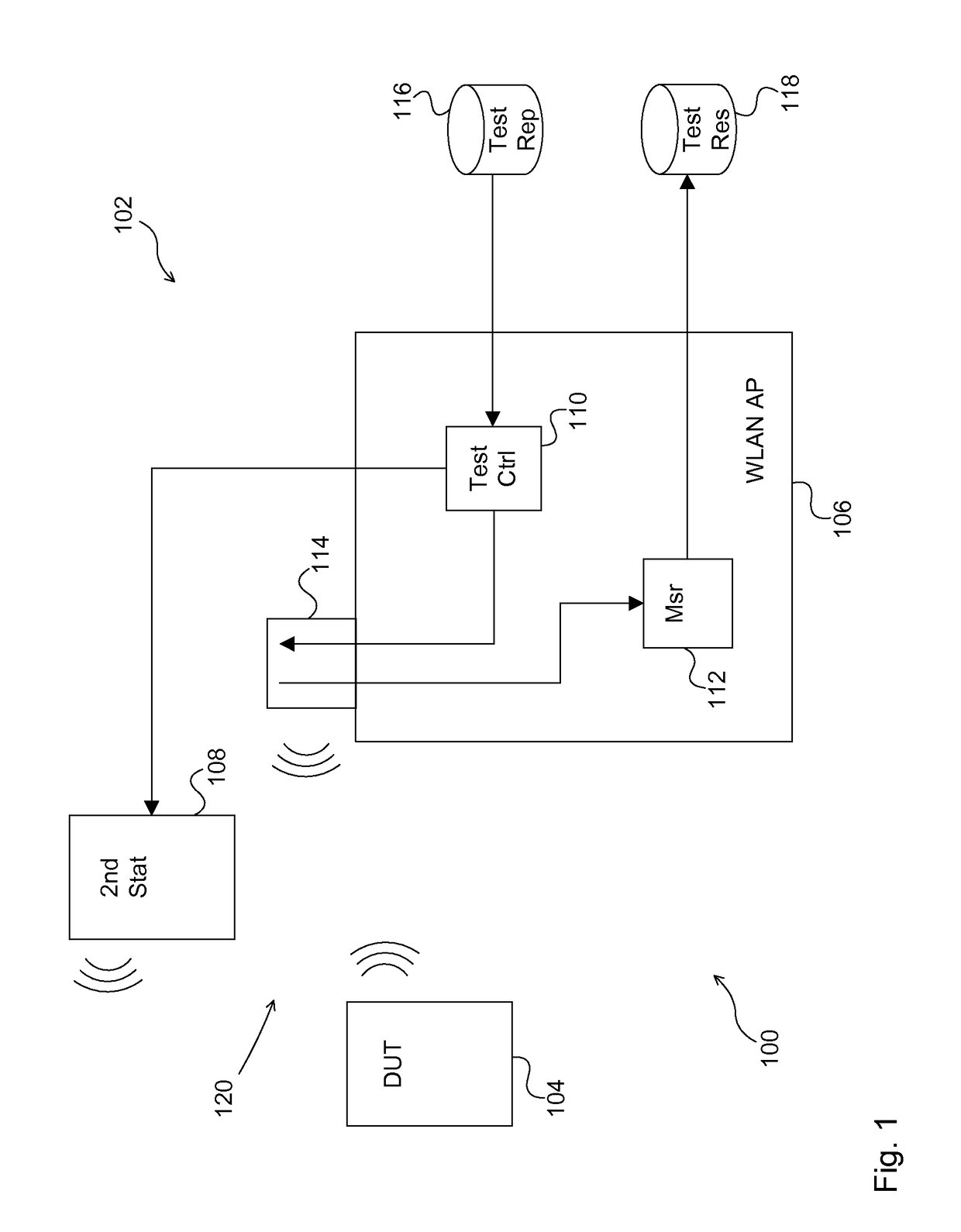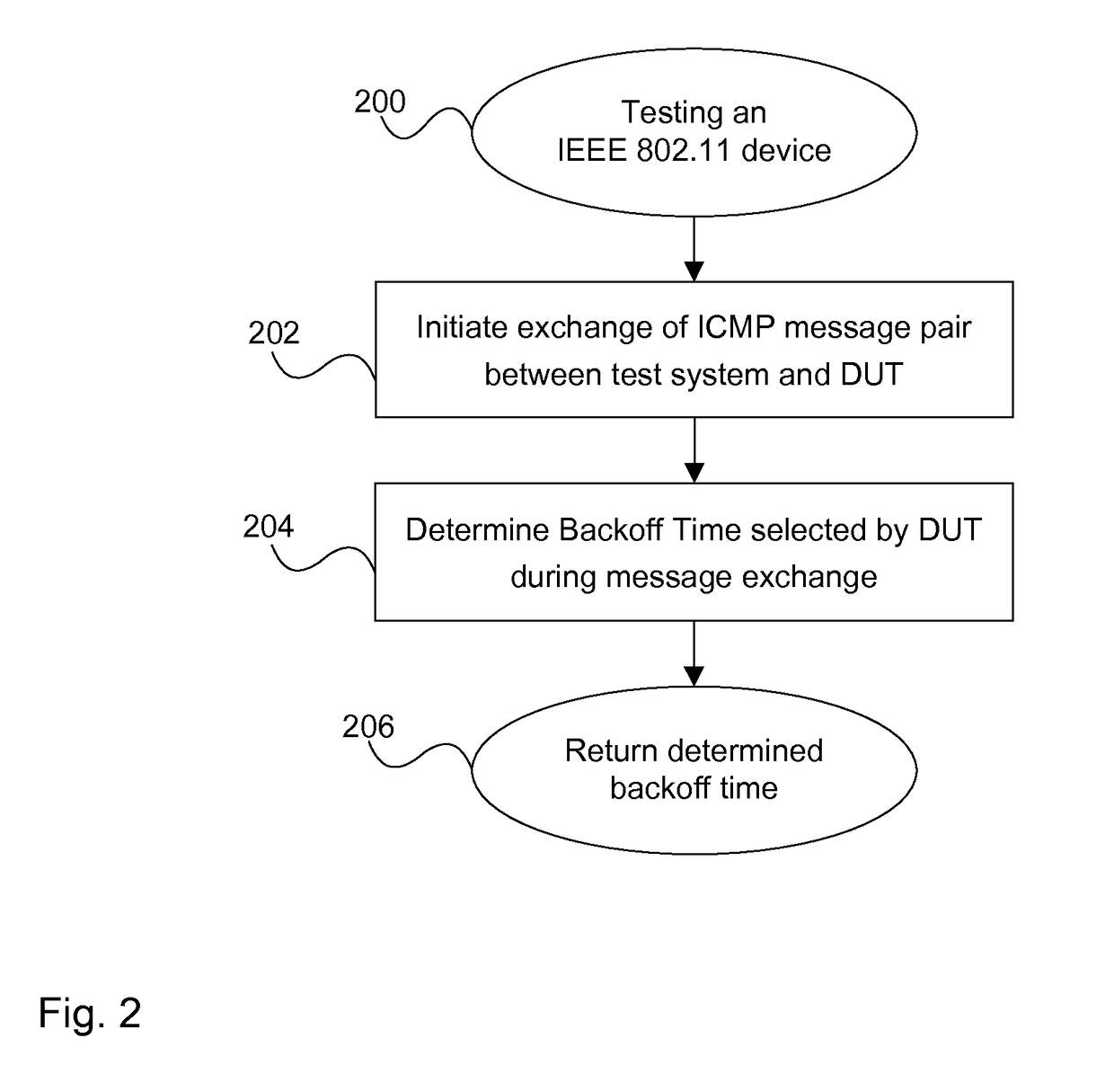Method and test system for testing wireless LAN devices
a wireless lan and wireless technology, applied in the field of wireless lan devices, can solve the problems of affecting performance, more and more traffic over-the-air in congested wlan bands, and wireless traffic data surge, and achieve the effect of simple yet effective test environment, efficient retransmission, and efficient operation
- Summary
- Abstract
- Description
- Claims
- Application Information
AI Technical Summary
Benefits of technology
Problems solved by technology
Method used
Image
Examples
Embodiment Construction
[0057]FIG. 1 schematically illustrates an embodiment of a test environment 100 including a test system 102 for testing a performance of an IEEE 802.11 WLAN station or device under test (DUT) 104. The test system 102 comprises a WLAN access point (AP) emulator 106 and a 2nd station emulator 108.
[0058]The DUT 104 may be any WLAN-capable device such as a WLAN enabled chip, chipset, stick, network card, etc., but also complex device such as a tablet or other general-purpose computer with integrated WLAN facility, mobile phone, smartphone, field device for industrial purpose, etc. When performing tests for comparing various devices, the identical tests may be repeated sequentially, or various devices may be tested (quasi)parallel. However, for sake of conciseness test environment 100 is described and referred to herein below as testing only a single DUT 104 at a time.
[0059]The AP emulator 106 comprises as functional components a test control component 110 and a measurement and performanc...
PUM
 Login to View More
Login to View More Abstract
Description
Claims
Application Information
 Login to View More
Login to View More - R&D Engineer
- R&D Manager
- IP Professional
- Industry Leading Data Capabilities
- Powerful AI technology
- Patent DNA Extraction
Browse by: Latest US Patents, China's latest patents, Technical Efficacy Thesaurus, Application Domain, Technology Topic, Popular Technical Reports.
© 2024 PatSnap. All rights reserved.Legal|Privacy policy|Modern Slavery Act Transparency Statement|Sitemap|About US| Contact US: help@patsnap.com










